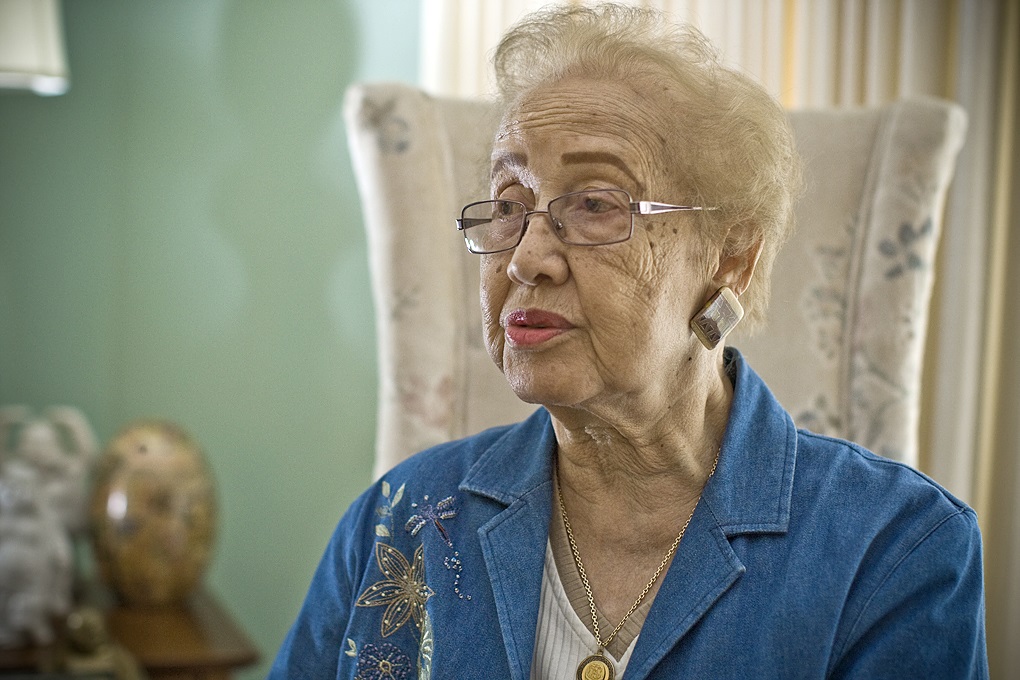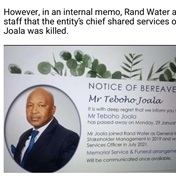
To Katherine Johnson, working for Nasa was just a job. She did not see herself as special or important.
Yet Johnson, one of three formidable black women featured in the film Hidden Figures, played a pivotal role in the Space Race and paved the way for future generations.
All three women worked in the challenging fields of analytical geometry, engineering and rocket science. They faced prejudice and discrimination while forging ahead in their careers.
Johnson became indispensable at Nasa doing calculations for orbital trajectories on the early Mercury flights. As Hidden Figures relates, her maths was instrumental in the success of the Friendship 7 Mission, which made John Glenn the first American to orbit the Earth in 1962.
What’s remarkable is that until now hardly anyone knew about the contributions of Johnson, (Taraji P Henson), Dorothy Vaughan (Octavia Spencer) and Mary Jackson (Janelle Monáe).
They might have remained hidden, had it not been for the curiosity and tenacity of author Margot Lee Shetterly, who brought the story of these women to the attention of the world, in her book, Hidden Figures.
The film, inspired by true events, is based on the lives of the women covered in Shetterly’s book. Exciting and inspiring, it is also hugely entertaining. Kevin Costner stars as the fictional head of Nasa’s Space Task Group.
Multiple Grammy-winning musician, Pharrell Williams, a producer on the film, was responsible for the score, in collaboration with Oscar winning composer, Hans Zimmer, and he wrote three songs for the film as well.
At 98, Johnson is engaging, sharp and witty, with a great sense of humour. She is completely unassuming and modest about her achievements.
Looking elegant in a pink top and grey skirt, the esteemed mathematician sat down in Newport News, Virginia, for a conversation about her life, her work and the film.
What kind of child were you?
“I was a bad little girl (laughs). No I wasn’t really, I was just an ordinary little girl; I did the sort of things everybody else did. But at school, as soon as the teachers asked a question, I always knew the answers before anybody else. I was the youngest in the class. And I was small. But I was just like everybody else, nothing special.”
When did the teachers realise you were good at maths?
“All the time at school, because I always had the answer right there.”
What did you enjoy about maths?
“I liked to count. When I was washing the dishes, I would count them. There were six of us eating at home and if there were seven plates on the table, I would want to know why.
"When I was older, I liked to count the stars. When we walked home from the movies, with the principal of the school, [he would accompany the children] I figured because he was principal, he knew everything and that he knew the names of the stars.
"So he would point out the stars to me. I just loved to learn about the stars.”
Did you enjoy school from the start?
“I liked learning and I wanted to learn anything at all that they could teach me. Even today, I love to learn. There’s a seven year-old boy we know, [the grandson of] a friend of ours and he said to me: ‘You don’t speak Spanish, I’ll teach you Spanish.’ So he’s teaching me.”
Where do you think your gift for maths came from and your determination to learn?
“My family I guess. My mother was a teacher. My father was a farmer.
"But he was wise because he wanted us off the farm and he brought us into town, to White Sulphur Springs, West Virginia, where we could go to elementary school and he said: ‘now learn something!’”
What were your dreams as a little girl?
“My dreams weren’t any different to everybody else’s. I knew I was going to be a teacher.
"Like anyone else who was educated and black, you could be a teacher or a nurse; you didn’t have much choice, that is what [black] women did. But my father used to say I was as good as anybody in the town – and I was no better than anybody else.”
So before working at Nasa, you became a teacher.
“I taught in elementary school and I taught French and music in the high school. I also taught a high school choir and prepared the children for musical programmes and commencement/graduation.”
You moved to Virginia to work at Nasa as a computer, with your family, what was that like?
“They needed ‘computers’ at the time and women answered the applications and got the jobs. There were several women at Nasa with me. They would talk about the stars and I knew a lot about all that, because I loved the stars.
"They had questions about the moon, like how far away it was from us, well I had been studying that, so I knew the answers, and it was no problem for me.
"And I liked being around smart people, so I was always learning from them. It was just a job to me and I liked it there. I enjoyed the challenge so much that it didn’t feel like a job.”
As we see in the movie, there were enormous difficulties for the black “computers” at Nasa, in terms of segregation.
“Segregation was the custom at that time. The white people went their way and I went mine. When I moved offices [from the West Area Computers where the segregated black women worked] to my new office in Flight Research, I sat down at a desk, I remember this fellow next to me moved.”
The film depicts the injustices in the workforce. Katherine, you were not paid what the white women or the men at Nasa were paid?
“Oh no, you didn’t have the same title or money. But that was just what you got. You could take it or leave it. If you wanted that job, you took it.”
Katherine, can you discuss the calculations you did for John Glenn’s mission?
“I just used a pencil and paper. I developed a set of equations and I could tell where he would be in relation to the earth. I was just computing on paper where he was in the capsule, and I could give him the coordinates of earth at that point, so he could get back home safely.
"He had to come back the same way he went out. I just calculated where his position was [in respect to] the earth. ”
John Glenn said he wanted you to do the calculations. He trusted you more than the computer.
“Yes, he said: ‘I want the girl to do the equations.’ [He meant Katherine] They put all these equations in the computer and got all the calculations, but John Glenn said: ‘I will use the computer’s equations if it gets the same results as ‘the girl’ gets.’
"It was very simple for me; I just had to calculate by hand. It was no big thing. It took me a day and a half, but I did it – I got the same answer as the computer!”
In the movie, we see what you had to go through, how the men in charge of the space programme wouldn’t let you into the editorial meetings at Nasa.
“Yes it was just habit. When I asked them if I could go in, they said: ‘well women don’t go into the meetings.’ But I wanted to be a part of the meetings and to learn what they were doing and to be there when they were making the decisions.
"So I said: ‘well can I go in? Is there a law against it?’ I asked again and again and eventually, they said: ‘okay, come on in.’”
As well as working at Nasa, you were taking care of the children, for several years as a single mother. That must have been hard?
“I did everything at the same time, whatever was needed. But I taught them [her daughters] how to do everything for themselves, I was always interested in doing things better, and seeing that they did everything better too.”
Why do you think this is an important story to tell?
“Well it shows girls that if they want to do this kind of work, they can. Just go on and do it. At Nasa they never had to ask me to do something over and over again, just to be sure I was right.
"They knew if I gave them an answer, that was the right one. It is about being prepared, so that when an opportunity presents itself you are ready to take it.”
You were awarded the Presidential Medal of Freedom. What was it like meeting President Barack Obama?
“Oh, that was so exciting, he is a very pleasant person, a wonderful person to talk to.”
What was it like meeting the first lady, Michelle Obama?
“It was nice to meet her. I didn’t cry though! I’m not the crying type.”
Katherine, what is your secret to living a good, long life?
“I don’t know. I can’t believe that I am 98 years old.”




 Publications
Publications
 Partners
Partners








